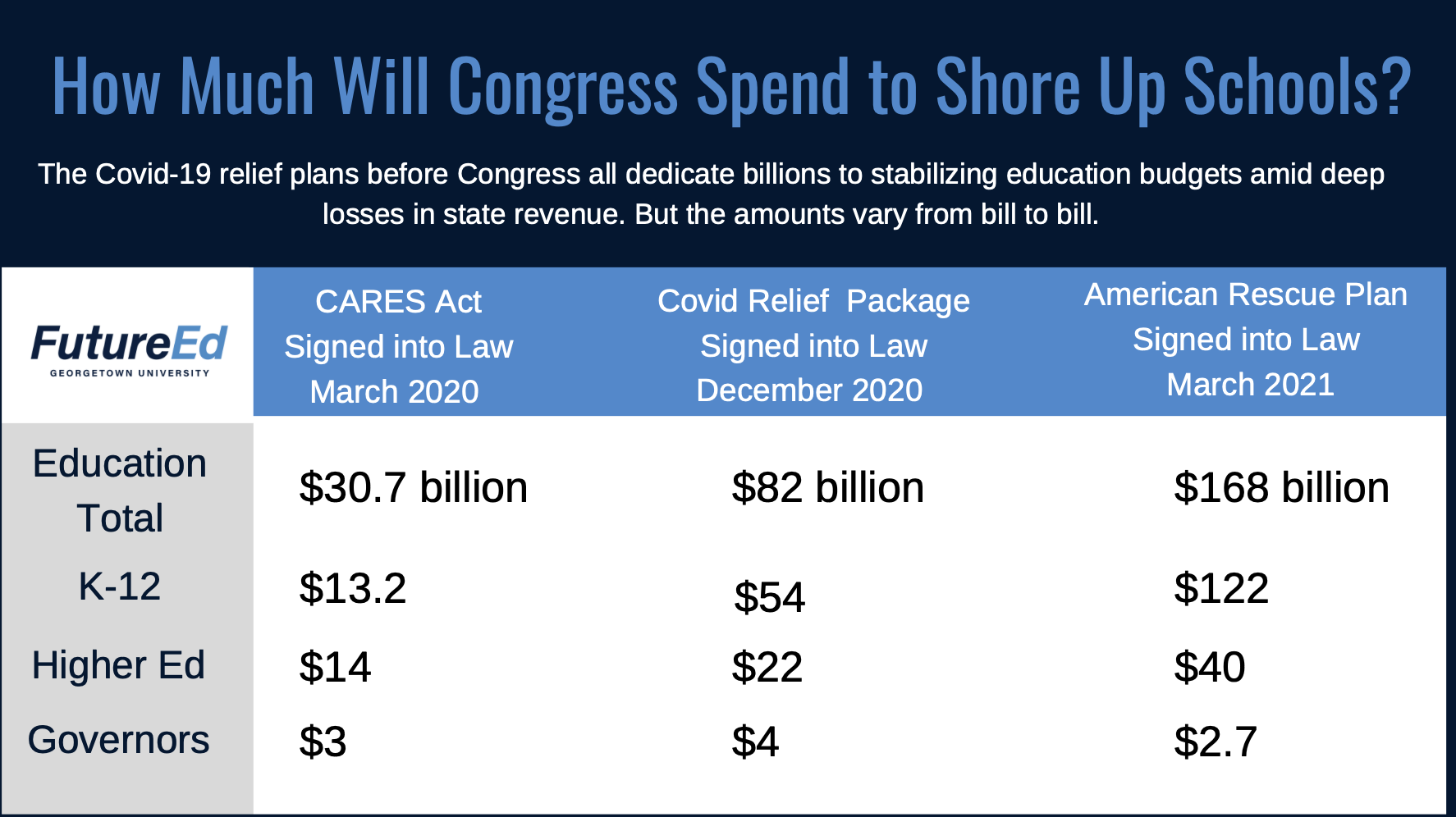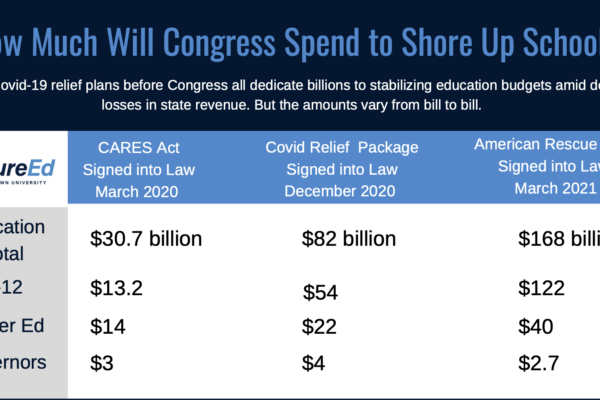 For a full account of Congressional Covid-19 aid, read our explainer. Beyond the dollars for stabilizing education budgets, the Congressional spending plans include money for other education priorities. Here are some examples:
For a full account of Congressional Covid-19 aid, read our explainer. Beyond the dollars for stabilizing education budgets, the Congressional spending plans include money for other education priorities. Here are some examples:
AMERICAN RESCUE PLAN (Signed into law)
- $40 billion in support for early care and education, through a $24 billion child care stabilization fund, $1 billion for Head Start, and an additional $15 billion for the Child Care and Development Block Grant.
- $7.2 billion for the E-rate program, which provides home internet access and connected devices
- $5 billion to extend the Pandemic Electronic Benefit Transfer (P-EBT) program throughout the school year and summer, giving students uninterrupted access to meals during the pandemic.
- $1 billion to expand national service programs to support response and recovery
- $800 million for education and wraparound services to support homeless children
- $100 million for the federal Institute of Education Sciences to research Covid-19’s impact on learning
CORONAVIRUS RESPONSE AND RELIEF SUPPLEMENTAL APPROPRIATIONS ACT (CRRSA) (Signed into law)
- $2.75 billion for parochial and private schools
- $7 billion for expanding broadband access
- $10 billion for child care assistance
CARES ACT (Signed into law)
- $4 billion for expanding broadband access
- $180 million “Rethink K-12 School Models” competitive grant program to help states focus on virtual learning and new models of delivering education
- $100 million in grants under Project SERV to help recover from “a violent or traumatic event that disrupts learning.
HEROES ACT (Passed the House)
- $10 billion in emergency funding for higher education institutions, including $1.7 billion for Historically Black Colleges and Universities, Tribal Colleges and Universities, and Minority Serving Institutions.
- $4 billion for career, technical, adult education, and training to help students gain the education and skills they need to join the workforce.
- $100 million for Project AWARE grants to support student mental health.
SENATE DEMOCRATIC BILL (Never voted on)
- $12.9 billion for low-income, homeless migrant, and English language learners, most of it channeled through Title I.
- $12 billion for IDEA program for students with disabilities in K-12 and early childhood programs.
- $4 billion for the E-Rate Program to provide technology and internet access to students in need.
SENATE REPUBLICAN BILL (Failed in a Senate vote)
- Two-thirds of the K-12 dollars would be distributed based on the extent to which schools, public and private, provide in-person instruction.
- 10 percent of K-12 dollars, or about $7 billion, would go to private schools
- $65 million for the Institute of Education Sciences to implement the National Assessment of Educational Progress.
REVISED HEROES ACT (Passed the House)
- $5 billion in grants for K-12 facility renovations with a focus on improving ventilation systems.
- $11.9 billion to alleviate burdens associated with the coronavirus for colleges and students, including $3.5 billion for Historically Black Colleges and Universities and other Minority Serving Institutions, and $7 billion for private, not-for-profit institutions
- $2 billion for the outlying areas and Bureau of Indian Education-funded schools and Tribal Colleges and Universities.
